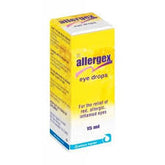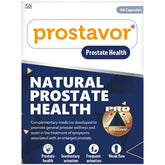High temperature (fever) in children
A high temperature, or fever, in children is when their body temperature rises above the normal range. Typically, a fever in children is considered to be a temperature of 38°C (100.4°F) or higher. Fever is a common symptom indicating that the body is fighting an infection or illness. While often not dangerous, it can be a cause for concern and discomfort in children.
Symptoms
The symptoms of fever in children can vary and may include:
- Warm Forehead: The child’s forehead may feel warm to the touch.
- Sweating: Increased sweating as the body tries to cool down.
- Chills and Shivering: Feeling cold and shivering despite the high temperature.
- Flushed Skin: Red or flushed skin.
- Irritability: Increased fussiness or irritability.
- Fatigue: Tiredness and lack of energy.
- Poor Appetite: Decreased desire to eat.
- Dehydration: Dry mouth, less frequent urination, and fewer tears when crying.
- Headache and Muscle Aches: Generalized discomfort and body pain.
Causes
Fever in children can be caused by various factors, including:
- Infections: Most commonly caused by bacterial, viral, or fungal infections, such as colds, flu, ear infections, or urinary tract infections.
- Immunizations: Sometimes a fever can occur after routine childhood vaccinations.
- Teething: Mild fevers can be associated with teething in infants.
- Heat Exposure: Overheating from high temperatures or excessive clothing.
- Inflammatory Conditions: Such as juvenile idiopathic arthritis.
- Other Medical Conditions: Such as gastrointestinal infections or respiratory illnesses.
Risk Factors
Certain factors can increase the likelihood of fever in children:
- Age: Young children, especially infants, are more prone to fevers.
- Exposure to Infections: Children in daycare or school settings are exposed to more infections.
- Immune System Status: Children with weakened immune systems are at higher risk.
- Chronic Conditions: Underlying medical conditions that can predispose to infections.
Diagnosis
Diagnosing the cause of a fever in children involves:
- Medical History: Discussing symptoms, recent exposures to illnesses, immunization status, and any other relevant medical history.
- Physical Examination: Checking for signs of infection or other underlying conditions.
-
Laboratory Tests:
- Blood Tests: To identify infections or inflammatory conditions.
- Urine Tests: To detect urinary tract infections.
- Throat Swabs: To identify bacterial infections such as strep throat.
- Imaging Tests: In some cases, X-rays or other imaging may be necessary to identify sources of infection.
Treatment
Treatment of fever in children focuses on relieving symptoms and addressing the underlying cause:
-
Medications:
- Antipyretics: Over-the-counter medications such as acetaminophen (Tylenol) or ibuprofen (Advil, Motrin) to reduce fever and alleviate discomfort. Aspirin should be avoided in children due to the risk of Reye’s syndrome.
-
Home Care:
- Hydration: Ensuring the child drinks plenty of fluids to prevent dehydration.
- Rest: Encouraging adequate rest to help the body fight off the infection.
- Light Clothing: Dressing the child in lightweight clothing and using a light blanket if needed.
- Cool Compresses: Applying a cool, damp cloth to the forehead to help lower the body temperature.
-
Medical Treatment:
- Antibiotics or Antivirals: Prescribed if a bacterial or viral infection is diagnosed.
- Hospitalization: In severe cases or if the child is very young, hospitalization may be necessary for further evaluation and treatment.
Prevention
Preventing fever in children involves reducing the risk of infections and other potential causes:
- Good Hygiene: Encouraging regular handwashing and avoiding close contact with sick individuals.
- Vaccinations: Keeping up-to-date with recommended childhood vaccines.
- Healthy Lifestyle: Providing a balanced diet, regular exercise, and adequate sleep to strengthen the immune system.
- Avoiding Overheating: Ensuring children are dressed appropriately for the weather and environment.
When to See a Doctor
Seek medical attention for a child with a fever if:
- The child is younger than 3 months old with a temperature of 38°C (100.4°F) or higher.
- The fever lasts more than three days.
- The child appears very ill, is excessively irritable or lethargic.
- The child has a seizure.
- There are signs of dehydration, such as a dry mouth, no tears when crying, or significantly reduced urination.
- The child has a rash that does not fade when pressed.
- The fever is accompanied by severe headache, stiff neck, or sensitivity to light.
- There are breathing difficulties, persistent vomiting, or diarrhea.
Conclusion
Fever in children is a common symptom that usually indicates the body is fighting an infection. While often not serious, it can be a source of concern for parents. Understanding the symptoms, causes, and appropriate treatments is crucial for managing fever effectively. Preventative measures, such as good hygiene and vaccinations, can help reduce the risk of fever. If you experience persistent or severe symptoms in your child, seeking medical attention is essential to address the underlying cause and ensure proper treatment
- Complication of High temperature (fever) in children
- Diagnosis of High temperature (fever) in children
- High temperature (fever) in children
- High temperature (fever) in children myths
- How is High temperature (fever) in children treated?
- Medicine for High temperature (fever) in children
- Remedies for High temperature (fever) in children
- Support for High temperature (fever) in children
- Symptoms associated with High temperature (fever) in children
- The best British Online Pharmacy
- Top 10 UK Pharmacies
- Treatment for High temperature (fever) in children
- What causes High temperature (fever) in children
- What is High temperature (fever) in children
- Where can I buy medicine for High temperature (fever) in children in the UK
- ZimSeller Pharmacy



















